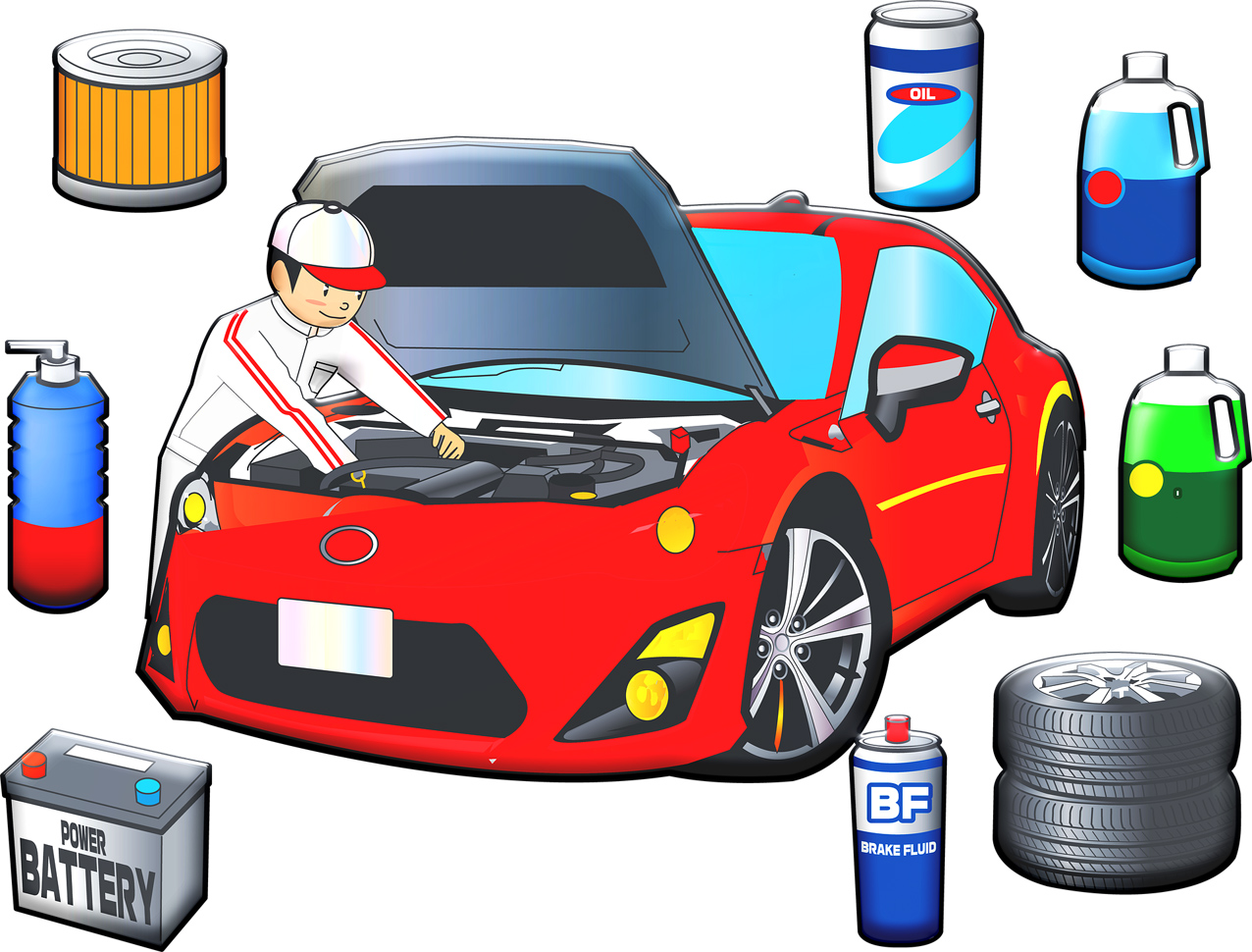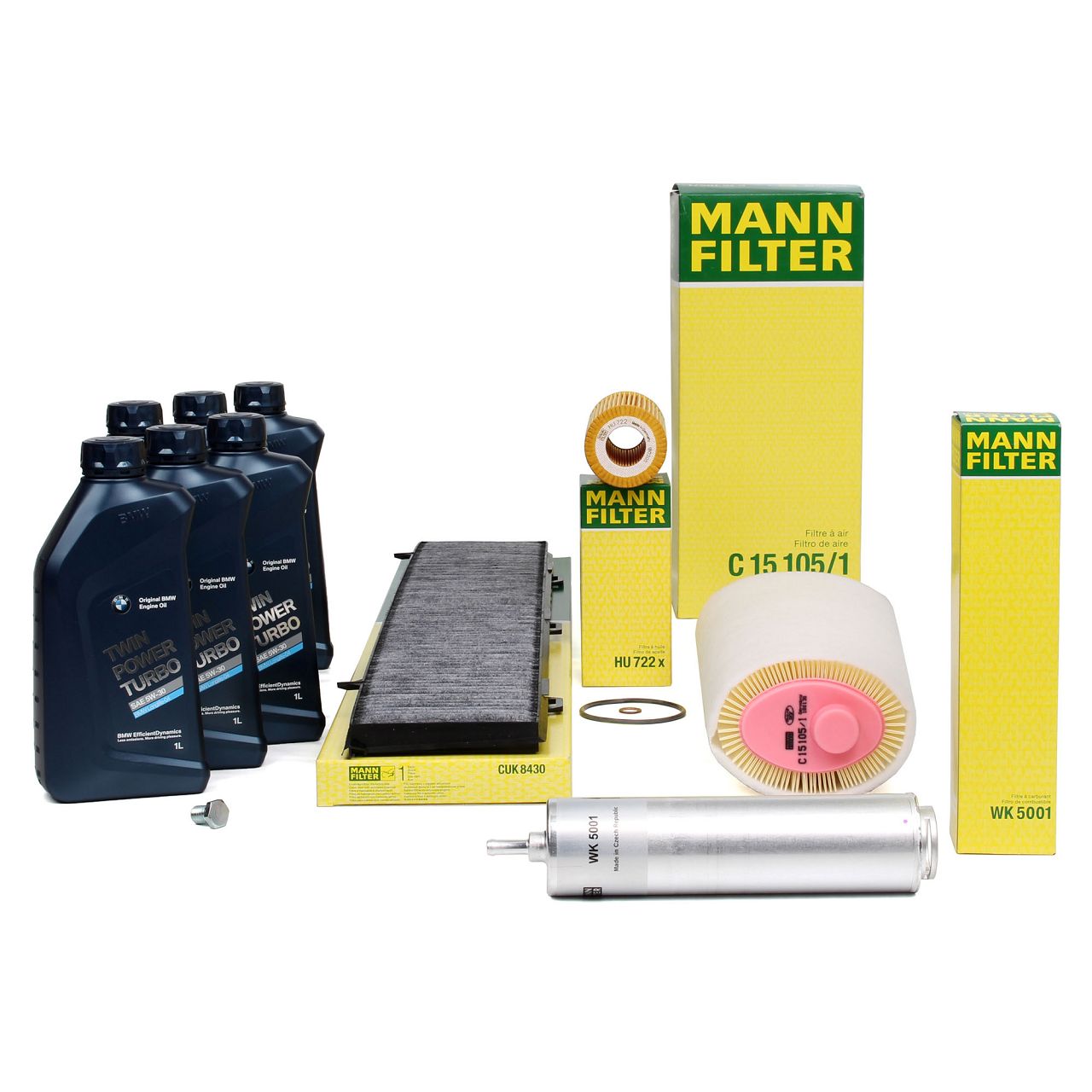product comparison
Quantity: {[ basketItem.quantity ]}
{[ formatPrice(basketItem.price * basketItem.quantity, basket.currency) ]} ({[ formatPrice(basketItem.price, basket.currency) ]})
The inspection at the car - an expensive fun? Not necessarily!
Every vehicle must be serviced - even if many vehicle owners associate high costs with the inspection. However, with regular maintenance, defects can be detected early and the value of the car can be maintained. In the following blog post we would like to show you how you can save repairs and costs. We also explain in more detail why maintenance is so important and how the small and large inspections differ.
What is actually done during an inspection?
Unlike the general inspection, which is necessary and legally required for the TÜV badge, the inspection is only recommended by the vehicle manufacturer. During the guarantee period of your vehicle it is important to have the maintenance carried out by a specialist workshop. Otherwise the vehicle guarantee expires. There are major differences between the vehicles and the manufacturers with regard to the maintenance intervals. In addition, the mileage is of course also important. You will find the exact intervals in the vehicle documents.
Modern vehicles can detect wear and tear of individual parts in addition to the fixed maintenance intervals with the help of sensors and software. The on-board computer then informs when maintenance is required. You can differentiate between the small Service A inspection and the large, comprehensive Service B inspection. The small inspection usually involves little more than a basic check of the fluids, an oil change and a visual inspection of individual components. Depending on the vehicle manufacturer, the large inspection covers the entire vehicle.

The following is a brief overview of what is included in the two maintenance variants for most manufacturers:
| "Minor inspection" | Additionally included with the "major inspection |
|---|---|
| oil change | engine and exhaust system |
| oil filter exchange | gearboxes and drive shafts |
| test of the windscreen wiper system | axles, & body |
| Inspection of the air filter and the cabin filter | electrical & lighting, pilot lights |
| check of tyres & brakes, brake discs and pads | Track rods & steering, check of hydraulic oil of power steering |
The contents are a rough guideline, since each manufacturer determines what is to be tested and when. Depending on the age of the vehicle, other repairs may be necessary in addition to the regular inspections. These include something like changing the timing belt and replacing the water pump. These also have change intervals, but are not part of the usual inspections.

How can I save money on the maintenance of my vehicle?
The correct communication before an inspection is extremely important. It should be agreed in advance what should and may be done on the vehicle and what the maintenance work will cost approximately. In the case of an additional necessary repair, please ask for consultation first so as not to be surprised by the costs. The garage can then provide you with an estimate of the costs, which must not exceed this amount significantly, according to the law not more than 20%.
However, there are also some repairs and measures that you can do for your vehicle yourself at home and independent of the service. This way you keep your car in good shape and save money.
We have listed the simplest things for you:
- Charge the starter battery
Especially during many short trips and cold weather it is worth connecting the battery to a battery charger every now and then! This will extend the life of the battery. - Change windshield wipers
You can also change the wipers on your vehicle yourself. We recommend not to neglect them and to replace them once a year. - Don't forget the windshield washer fluid!
You can refill the wiper water yourself using window cleaner. Often workshops charge high prices for this during maintenance, which can save you money. - Fill up antifreeze
You can find out which antifreeze you need for your vehicle in the manual. But be careful, there are no mistakes allowed here when choosing the fluid! - Check the tyre air pressure
A matter of course, but often neglected. Checking the tyre pressure at the filling station prevents tyre wear and high fuel costs. - Replace air filter
Replacing the interior cabin air filter and the engine air filter is no magic trick for most vehicles, try it yourself! - Replace defective bulb
Even a broken bulb can be replaced quickly and easily in many cases. The procedure is usually described in detail in the operating instructions for your vehicle. - Check tyre sealant and replace if necessary
The tyre sealant usually has a best before date. If it has expired, you can simply replace it with a new one. - Change the first aid kit.
The first-aid kit should always be kept up to date and is gladly offered as an add-on by the workshops. It is however available everywhere for little money. - change spark plugs if necessary
If the spark plug needs to be replaced, there are numerous instructions on the Internet.

If you feel confident, you can of course also carry out other maintenance work yourself, such as oil changes. However, you must then also ensure that the used oil is disposed of properly. It is also advisable to change the oil filter directly.
If you maintain your car regularly, you can also reduce workshop costs. Furthermore, some garages allow you to bring your own spare parts, which are cheaper than those available from the garage. For this purpose we offer, among other things, ready-made inspection kits, optionally also with the corresponding engine oil. Nevertheless, you should check with the workshop before bringing your own parts for maintenance.

Why is inspection so important?
The regular maintenance of the vehicle is primarily important for your safety. Because safety-relevant components such as the brakes wear out over time. The inspection serves to detect such defects at an early stage. Additionally, a well-maintained vehicle increases the likelihood of passing the TÜV inspection at a reasonable price.
All maintenance work carried out should be recorded in the chequebook. It is used to determine the value of a vehicle. If you are planning to sell your vehicle at some point in the future, a complete chequebook can be used to increase the price.
No matter if you want to service your vehicle yourself or if the next workshop appointment is coming up, you will find the suitable inspection sets with us. If you are unsure which one fits your vehicle, simply contact our customer service department with the 17-digit chassis number.
To the inspection sets



























